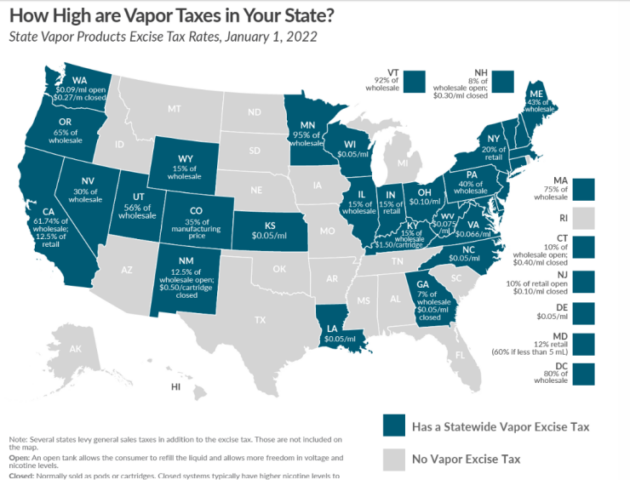How taxes on vaping are pushing more young people to cigarettes
When the government tries to micromanage the everyday habits of millions of people, it doesn’t always go well, to put it mildly. The latest example of nanny-state meddling backfiring comes courtesy of recent tax increases on vaping products—which new research suggests may have had lethal unintended consequences.
A study by Yale Professor Abigail Friedman and Georgia State University Professor Michael Pesko examined the impact that tax increases on electronic cigarettes/vaping products had on both e-cigarette usage and traditional smoking, specifically researching the impact on young consumers (ages 18-25).
Predictably, it finds that as taxes increase on vaping products, vaping decreases. Yet it also shows that higher taxes on vaping products leads to an increase in traditional cigarette smoking among young people..
“A one dollar increase in [vaping] taxes yielded significant reductions in young adults’ daily vaping alongside increases in recent smoking,” the authors find.
The researchers ultimately conclude that “higher taxes on electronic nicotine delivery systems (ENDS) are associated with decreased ENDS use but increased cigarette smoking among 18-25 year-olds.”
This is what’s known as the “substitution effect,” defined by Investopedia as “the decrease in sales for a product that can be attributed to consumers switching to cheaper alternatives when its price rises.”
How the Nanny State backfires
Why does this matter?
Well, while vaping isn’t great for your health, it’s far, far less deadly than traditional cigarette smoking. It’s not the nicotine in cigarettes that causes cancer, it’s the black tar and other carcinogens—which aren’t in e-cigarettes and vaping products. So, while vaping can have some negative health impacts and isn’t necessarily advisable, public health experts estimate that it’s 95 percent safer than traditional smoking.

The takeaway here is glaring. New taxes on vaping products are meant to improve public health and discourage young people from using harmful products. But, in pushing young people back toward much more dangerous alternatives, the taxes clearly backfired—and more people will ultimately get lung cancer and eventually die as a result.
I wish I could say this was surprising. But it’s actually inevitable that attempts to centrally plan and micromanage society will result in unintended consequences.
As economist Antony Davies and political scientist James Harrigan explain, “every human action has both intended and unintended consequences. Human beings react to every rule, regulation, and order governments impose, and their reactions result in outcomes that can be quite different than the outcomes lawmakers intended.”
This is what Harrigan and Davies call the “Cobra Effect.”
The phrase stems from a comical yet revealing tale of how an Indian city placed a bounty on cobras to try and solve their infestation problem, yet achieved the opposite result. Why?
At first, more people hunted cobras to get the bounty, and the cobra population decreased. Yet then individuals started breeding and raising cobras at home in order to get the bounty again. When the government finally canceled the bounty, citizens released the cobras they had been raising in their homes into the wild.
The end result was a worse infestation of cobras than the city had to begin with.
Whether it’s vaping or pest management, government attempts at central planning often create unintended consequences far exceeding any benefits they achieve. How many times do their efforts have to backfire before bureaucrats and politicians learn the limits of their abilities?
–Brad Polumbo is a libertarian-conservative journalist and Policy Correspondent at the Foundation for Economic Education. Used with permission.






